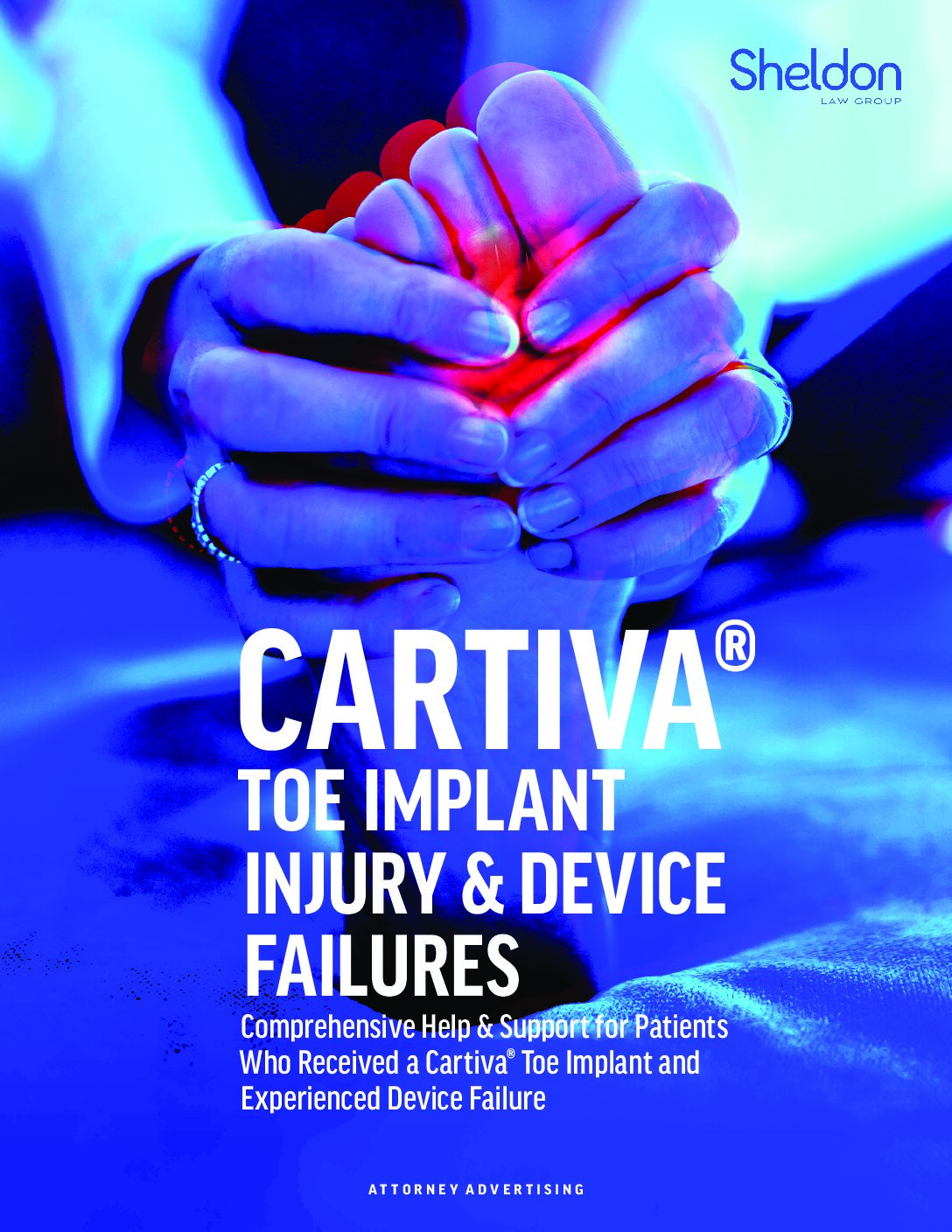Frequently Asked Questions about Cartiva
Arthritis in the joint of the big toe can make every step painful. Whereas joint fusion surgery used to be the main treatment option, the Cartiva toe implant, a type of cartilage replacement device promised to reduce the pain of bone-on-bone friction. While the device showed promise when it was first released, many patients are reporting concerning complications. Here we discuss some of the most frequent questions regarding big toe implants and recovery.
Get A 100% Free CASE EvaluationQ: What is Cartiva big toe implant surgery?
- A: Cartiva toe implant surgery involves a synthetic cartilage implant in the metatarsophalangeal (MTP) joint of the big toe. This implant is designed to mimic the natural function of cartilage and provide relief for conditions such as osteoarthritis.
Q: How does Cartiva big toe implant differ from traditional joint replacement surgery?
- A: Unlike traditional joint replacement surgery, Cartiva toe implantation preserves the bone and requires less invasive techniques. It aims to alleviate pain and improve joint function without removing significant amounts of bone, allowing for a potentially quicker recovery.
Q: Who is a suitable candidate for Cartiva big toe implant surgery?
- A: Candidates for Cartiva toe implant surgery typically have arthritis in the MTP joint of the big toe, experience pain and limited mobility, and have not responded well to conservative treatments. However, individual suitability is determined by a thorough evaluation by the orthopedic surgeon.
Q: What is the expected recovery time after Cartiva toe implant surgery?
- A: Recovery time can vary, but many patients may resume normal activities within a few weeks. Full recovery and optimal benefits may take several months. However, some patients suffered complications that extended their recovery. Other patients reported pain, stiffness, and serious adverse events that required additional surgery.
Q: Are there any potential risks or complications associated with Cartiva big toe implant surgery?
- A: As with any surgical procedure, there are potential risks and complications, such as infection, swelling, or allergic reactions. However, some patients have complained of toe stiffness, chronic pain, and inflammation after receiving a big toe implant.
Q: How long does a Cartiva big toe implant last?
- A: The longevity of Cartiva toe implants is still being studied, but clinical trials have shown promising results. However, patients have also experienced complications such as fracture, subsidence, and infection with some requiring additional surgery.
Q: Can the Cartiva implant be removed?
- A: Yes, the Cartiva toe implant can be removed if it fails. Patients who have the big toe implant removed may need to undergo bone fusion surgery.
Q: Is Cartiva toe implant surgery covered by insurance?
- A: Coverage varies among insurance plans as many consider the implant “experimental” and do not cover the device. It is essential to check with your insurance provider to determine the extent of coverage for Cartiva toe implant surgery and associated costs.
Q: How soon can I return to regular physical activities after Cartiva toe implant surgery?
- A: While patients are typically encouraged to gradually resume normal activities after a few weeks, some patients did not experience a reduction in pain, or an increase in range of motion that allowed them to resume normal activities. In fact, some studies have shown a higher-than-expected rate of premature failure.
Q: What are the success rates of Cartiva toe implant surgery?
- A: The Cartiva label claims the big toe implant has a failure rate of less than 14%. However, post-market data suggests the actual failure rate could be much higher. Some research suggests potential failure rates as high as 64%.

